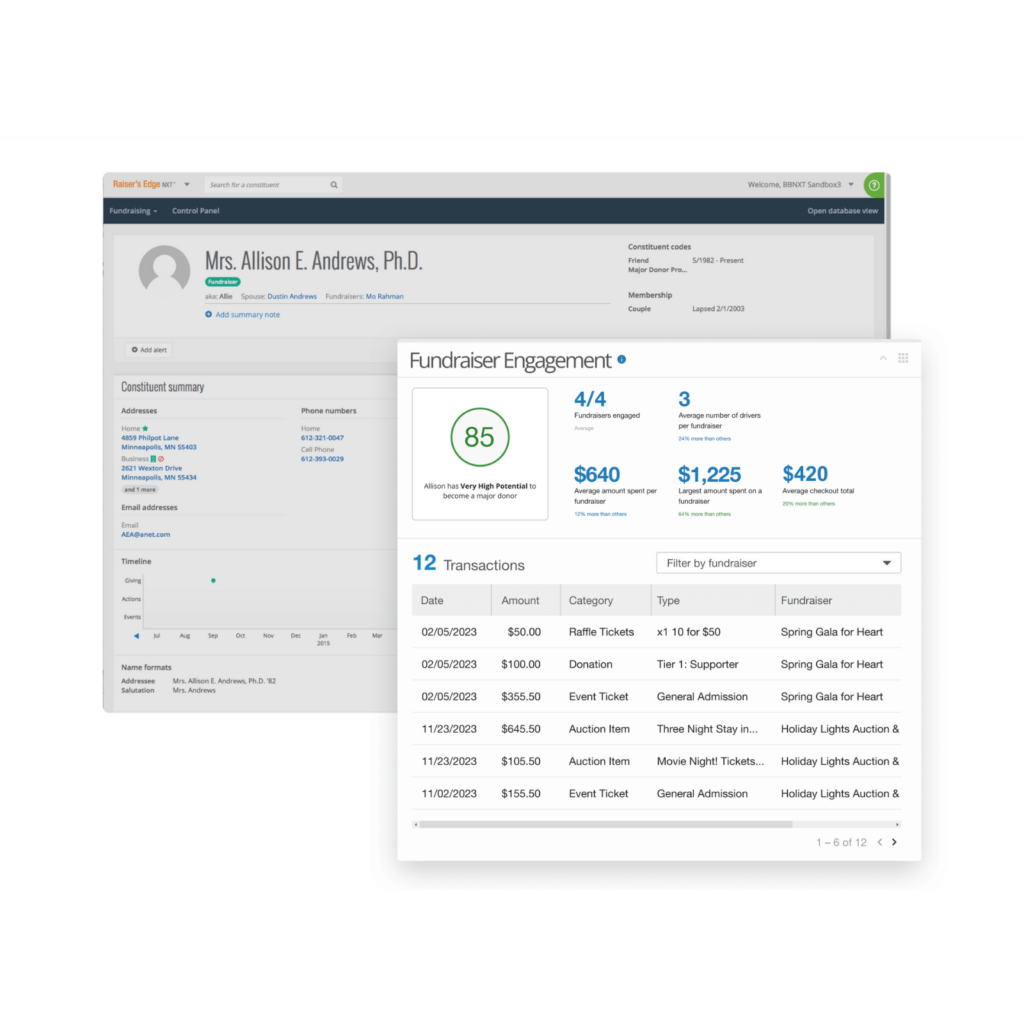Have you ever wondered how some nonprofit events manage to draw major crowds and buzz, even with limited promotional budgets? The answer lies not in spending more, but in spending smarter.
You’re already passionate about the cause your event will support. You just need to communicate that passion to the right audience through the right channels and motivate others to feel just as excited about your event. Whether you’re hosting an online auction or your annual charity run, effective marketing is one of the primary keys to success—and luckily, you don’t have to blow your budget out of the water.
To help you reimagine your approach to event promotion, this article introduces three cost-effective lifelines: Google Ads, email, and community partnerships. These budget-friendly strategies are game-changers that can elevate your event marketing from under-the-radar to unmissable.
Advertise Your Event on Google.
Online advertising is a cornerstone of effective event promotion due to its advanced targeting capabilities. Luckily, digital advertising platforms recognize that nonprofits operate on limited budgets, and many offer discounted (or free!) access to verified organizations. That means paid advertising isn’t just for corporate giants.
Through the Google Ad Grant program, eligible nonprofit organizations receive $10,000 per month in free advertising on Google Search. This grant can be a game-changer for nonprofits looking to promote their events to wider audiences without the financial burden typically associated with online advertising.
As the world’s most popular search engine, Google is the perfect addition to your event marketing strategy. Simply apply to the program through Google for Nonprofits and create ads to promote different areas of your cause, like your upcoming event. Here are some tips to create powerful ads for your next event:
- Start with an optimized event landing page. Your ads should drive users to this page, so optimize it for conversions. Brand the page to your cause, explain how the event supports your work, include participatory information, and add clear CTAs.
- Research keywords. Next, identify keywords that potential attendees will likely use when searching for events like yours, like “5K run for heart disease research” or “wildlife conservation fundraiser.” You can use tools like Google Keyword Planner to get keyword suggestions and metrics like search volume.
- Write compelling ads. Craft impactful ads that underscore your event’s unique impact. Use persuasive CTAs like “Your Impact Awaits – Register Now!” for immediate action, and include keywords with captivating headlines and descriptions that emphasize urgency. Enhance your ads with callout extensions like “Free Admission,” “Special Guests,” or “Fundraising for Homelessness Prevention” for added appeal.
From here, use geotargeting to narrow down your audience for events like in-person auctions and ad scheduling to control when your ads appear based on specific days and times. Then, push your ads live. These nonprofit advertising tactics are more technical and often best handled by a professional. Consider turning to a Google Grants manager to handle your ads and promote different aspects of your mission beyond your events.
Market Your Nonprofit’s Event Via Email.
Getting Attention’s nonprofit digital marketing guide describes email as the bread and butter of nonprofit marketing thanks to advanced customization options and the ability to deliver outreach directly to supporters’ inboxes. Email is responsible for an incredible amount of online revenue, making it the perfect avenue for sharing your event with supporters. After all, you already know everyone on your email list is interested in your cause!
If your subscriber list is lacking, gather email addresses through your website and social media first. Encourage sign-ups by highlighting the value subscribers will receive, such as early bird event info, exclusive content, or insights into your cause. From here, start promoting your event. Here are some tried-and-true tips for making the most of this channel:
- Craft engaging subject lines and calls to action. Encourage people to open your emails with compelling subject lines like “Bid for a Cause at Our Annual Fundraising Auction!” Personalize the emails where possible, using the recipient’s name and tailoring the message based on their previous interactions with your organization.
- Focus on storytelling. Stories drive connections to your cause, so share a closer look at your work through beneficiary, staff, or volunteer stories. As explained in our virtual gala guide, videos, photos, or infographics can make your stories more engaging and impactful.
- Use segmentation to tailor messages. Segment your list based on factors like past event attendance, donation history, and expressed interests. Look at constituents’ profiles within your CRM for insights. With our Raiser’s Edge integration, you can see each donor’s contributions, such as average amount spent per fundraiser, past fundraisers they’ve participated in, and much more. These insights enable targeted messages that speak to different audience segments, like VIP event invitations for long-time donors and introductory information for new subscribers.

Email marketing isn’t just about sending messages; it’s about nurturing relationships with your audience. By focusing on a personalized, engaging, and data-driven strategy, your nonprofit can create emails that promote your events and strengthen bonds with supporters.
Collaborate With Other Organizations.
A community partnership is a collaborative alliance between your nonprofit and local businesses or other nonprofits. These partnerships aim to be mutually beneficial through shared resources, promotion, and support for a cause that aligns with both organizations’ values.
Double the Donation’s list of nonprofit marketing ideas highlights community partnerships as a powerful source of support, especially when it comes to expanding your audience. Business owners in particular actively engage in these partnerships to associate their companies with a worthwhile cause and demonstrate their values to their communities.
When you plan standout fundraisers, organizations will be ecstatic to get on board and associate themselves with your events. To take a collaborative approach to promoting your event, here’s how to leverage these partnerships:
- You identify potential partners. The key is to find synergistic relationships where both parties can benefit. For instance, a local plant nursery can gain positive publicity by promoting an environmental conservation organization’s annual fundraising gala. When approaching potential partners, show that you understand the business and how the partnership aligns with their objectives. Clearly articulate the visibility they’ll gain in return for promoting your event.
- The organization promotes your event. They’ll share your event materials across their marketing channels, like social media, newsletters, or in-store promotions. This not only expands your reach but also lends credibility to your event. Partners can also encourage their employees to volunteer at the event, providing additional support.
- You acknowledge your partner in your event materials. In return, recognize your partners for their generous efforts. You might feature their logo in your promotional content, verbally recognize them during the event, highlight their contributions on social media, or display signage with their logo at the venue.
In essence, community partnerships offer a dynamic way to promote your nonprofit’s event while fostering a sense of community involvement. By collaborating with local partners, you can extend your reach and host a more successful event. Strive to build relationships that benefit your current event and lay the foundation for future collaboration, so when your next event rolls around, your partners will be excited to promote it.
Wrapping Up: Maximizing Impact With Limited Resources
Promoting your nonprofit’s event doesn’t require an extravagant budget. Rather, it requires creativity, strategy, and collaboration. By tapping into these budget-friendly marketing strategies, you can grow the reach and impact of your next fundraising event.
Remember, each event isn’t just a fundraiser; it’s a chance to tell your story, inspire passionate supporters, and make a lasting impact. Embrace these strategies and pay attention to how your audience responds. After your event wraps up, don’t let those relationships fall by the wayside either. Reach out, thank attendees for their generosity, and keep them in the loop on your cause. In turn, you’ll transform event attendees into long-term donors fully engaged in your mission. You’ll ensure your next event isn’t only successful but also leaves a meaningful imprint on your cause.


